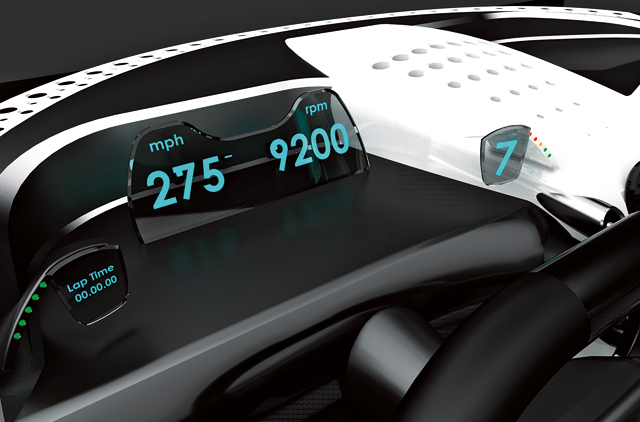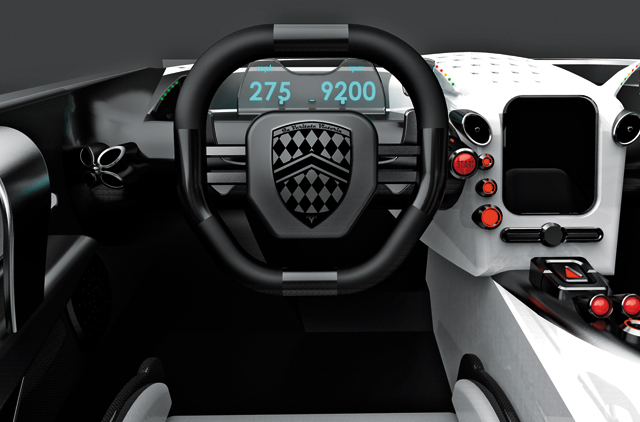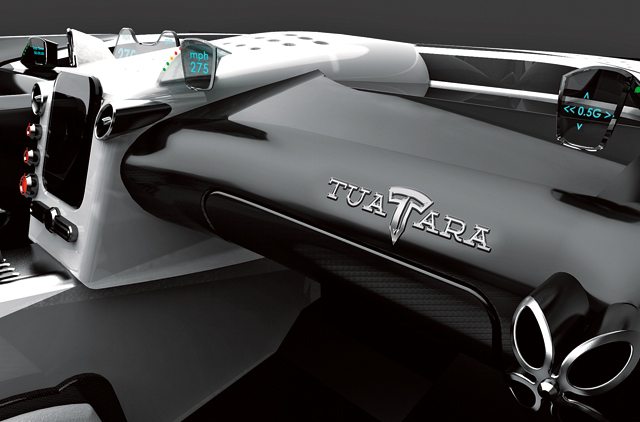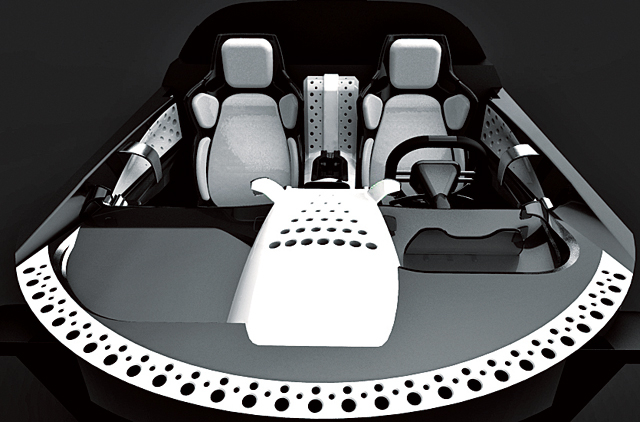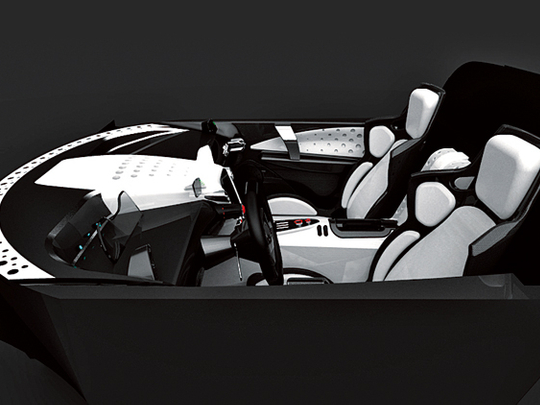
When you're driving at close to double a jet aircraft's take-off speed, you should also feel like you're inside one. Just as Lamborghini complemented the Aventador's stealth-fighter looks with a suitably designed cockpit, the aerospace theme of the SSC Tuatara's Jason Castriota-sculpted exterior is carried over to the cabin as well. While the Lambo has an LCD screen behind the steering wheel that renders the dials and info, SSC has gone a step further by not using a conventional instrument cowl and instead deploying a fighter-plane-inspired head-up display, incorporating the speedo and the tacho. This glass screen is flanked on either side by two smaller displays; the one on the right of the driver displays the gear currently engaged, while the screen on the left can be programmed to display whatever info the driver chooses from the menu.
The guys at Shelby Supercars haven't ignored the passenger when designing the cockpit. The passenger seat has been converted into a veritable co-pilot's area, with basic information such as the car's current speed and engine revs being projected onto two auxiliary screens, making him/her feel more involved in the whole thing.
Read more: The 440kph SSC Tuatara lands in the UAE
Even the AC vents draw from the exterior design of the Tuatara, the central ones being inspired by the car's twin exhaust pipes, while the side vents mimic the exhaust design found on space shuttles. The ‘hole-pattern' design also finds its way into the cabin right across the centre console, door panels and armrests.
The cabin layout of any supercar out there will be more exciting than that of the Bugatti Veyron's minimalist interior. But with its decidedly unconventional design and features, the Tuatara's cabin scores a point over those of the McLaren MP4-12C and the Aventador too.


